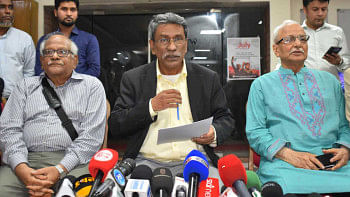Three cases of ‘policy paralysis’ in Bangladesh

"Policy paralysis" can be described as a situation where critically important laws and reforms are not undertaken or, even if undertaken, not implemented as a result of a lack of commitment from the government or the inability of the political and economic elites in the country to reach a consensus over the nature of reforms. This is also reflected in the indecisiveness of the government in the areas of public policymaking. Policy paralysis can also refer to a situation where, even when policies for reforms are adopted, they remain mostly limited to paper, and the government fails to implement them. It can be argued that the government's failure to carry out critical economic reforms on time due to "policy paralysis" can result in a high cost to the economy and society as far as ongoing development challenges and larger development goals are concerned.
Bangladesh is expected to graduate from the LDC status by 2024, and studies have shown that along with this graduation, the country is going to face stiff challenges in its major export markets, which can lead to negative development implications. Also, as the country aims to achieve the uphill targets of the Sustainable Development Goals (SDGs) by 2030 and become an upper-middle-income country by 2031, three major areas of policy reform have become vital. However, the syndrome of "policy paralysis" are also quite apparent in all three areas.
The first area in which one can detect this syndrome of policy paralysis is the fiscal sector, where both the lack and the ineffectiveness of reform processes are resulting in a declining share of tax revenue in the gross domestic product (GDP) since 2011. Bangladesh's tax-GDP ratio is one of the lowest in the world. In recent years, the average tax-GDP ratio in Bangladesh has been only 8.7 percent, while countries like India, Nepal, Malaysia and Thailand have the tax-GDP ratios of 11 percent, 17.5 percent, 14.3 percent, and 15.8 percent respectively. A study by Bangladesh Planning Commission in 2017, on the resources required for attaining SDGs in Bangladesh, estimated that the country's tax-GDP ratio needs to be increased to 16-17 percent by 2030 to achieve many of the SDGs. This seems to be a very ambitious target given that the tax-GDP ratio in Bangladesh has been on a declining trend in recent years. There is a need to get rid of the policy paralysis in this case. Improving the tax base, reinforcing tax administration and compliance along with identifying the loopholes and closing them to prevent tax leakages require a firm and credible commitment to reform.
The second case of policy paralysis is in the financial sector. Since 2011, the banking sector has been experiencing a rising ratio of non-performing loans (NPL) to total loans. The rising NPL is not the cause but the outcome of a serious institutional failure as well as political patronage in the banking sector. While the NPL ratio was as low as 6.1 percent in 2011, the ratio started to rise since then, and by 2018 it stood at 10.4 percent. By contrast, countries like Sri Lanka, Thailand, Indonesia and Malaysia have NPL ratios less than 3 percent, reflecting much better governance in their financial sector. The quality of governance in the banking sector in Bangladesh has been highly compromised by weakening regulations, unsound provisions backed by political patronage, and lack of independence of the central bank. While there is a genuine need for a comprehensive banking-sector reform and the central bank needs to be given full autonomy and independence with regard to its regulatory responsibilities, very little effort from the government has been observed in this regard. Therefore, elites' lack of credible commitment to reform is a constraining factor behind establishing better governance in the banking sector.
The third case of policy paralysis concerns the staggeringly low shares of public spending on education and health in GDP, which remained unchanged around 2 percent and 0.4 percent respectively or declined over time for the past two decades. Bangladesh is near the bottom of the list of countries with the lowest ratios of public expenditure on both education and health to the GDP, which were less than 2 percent and 0.39 percent respectively in 2018. By contrast, in recent years, the average public education expenditure ratios are 3.3 percent for the LDCs, 3.1 percent for other South Asian countries, 4.3 percent for the lower-middle-income countries, 4.1 percent for the upper-middle-income countries, and 5.2 percent for high-income countries. Furthermore, the average public health expenditure ratios are 1.2 percent for the LDCs, 1 percent for South Asian countries, 1.3 percent for the lower-middle-income countries, 3.3 percent for the upper-middle-income countries, and 7.8 percent for high-income countries.
With such a poor public spending record in education and health, it is impossible for Bangladesh to register substantial progress towards attaining SDGs by 2030.
Dr Selim Raihan is a professor at the Department of Economics, University of Dhaka, and Executive Director at the South Asian Network on Economic Modeling (SANEM). Email: [email protected]

 For all latest news, follow The Daily Star's Google News channel.
For all latest news, follow The Daily Star's Google News channel. 



Comments